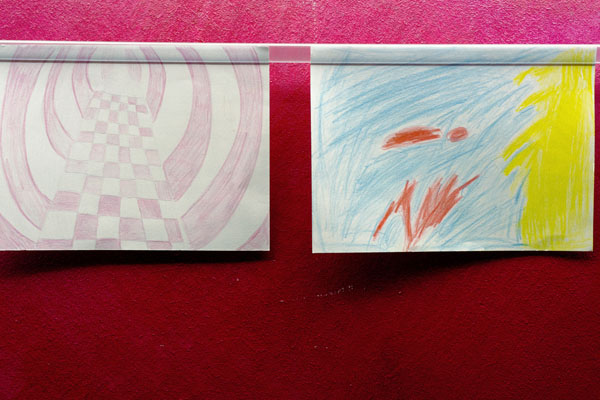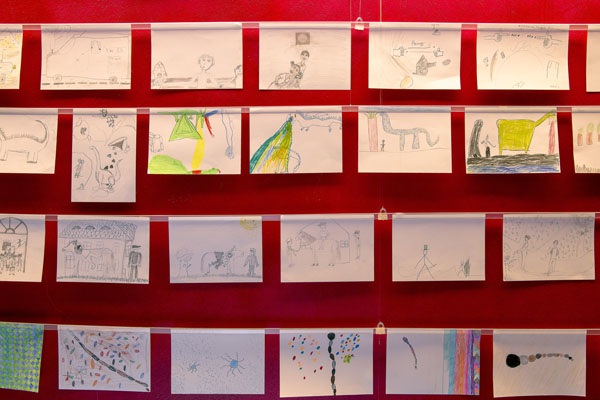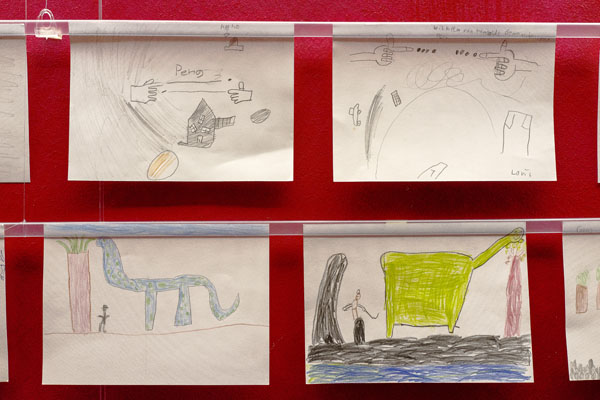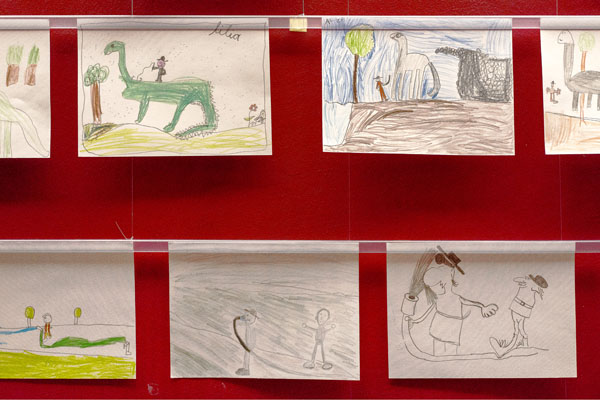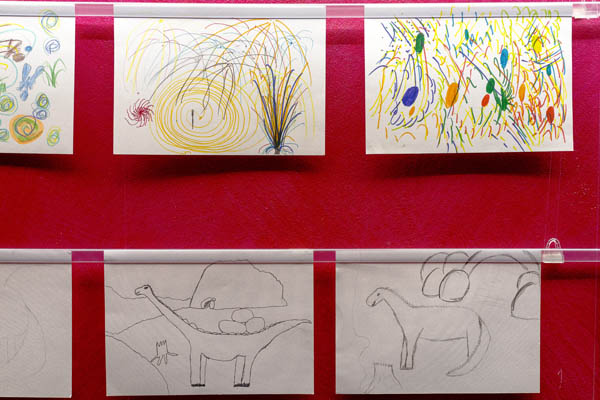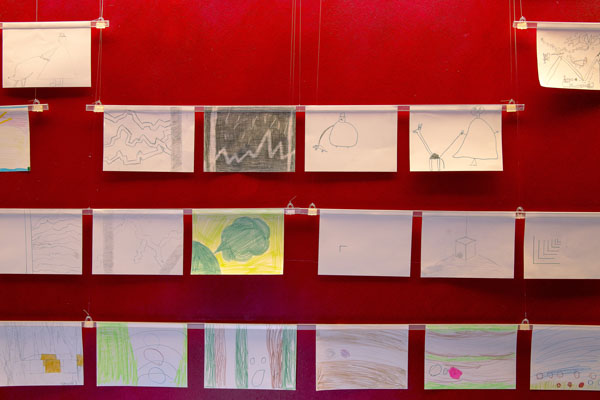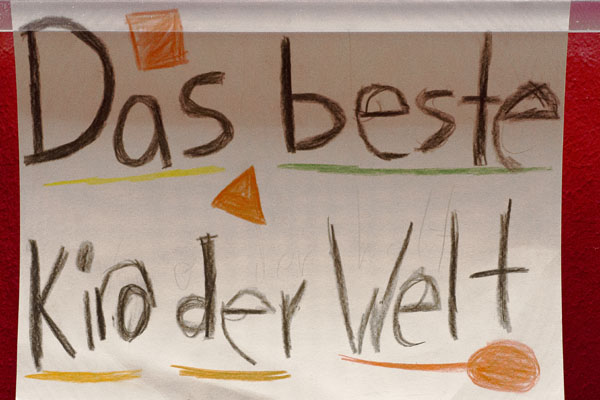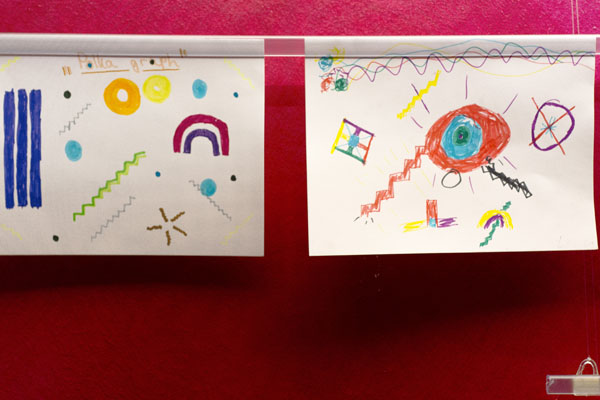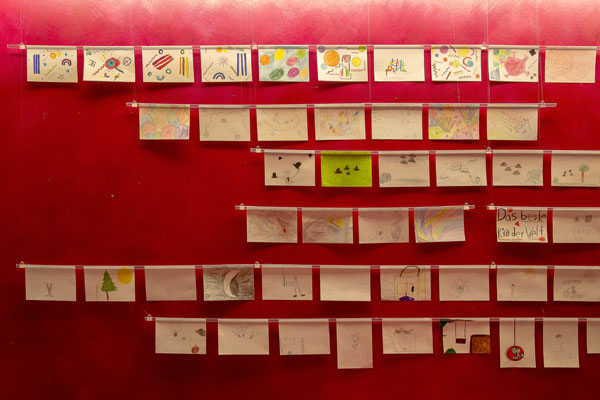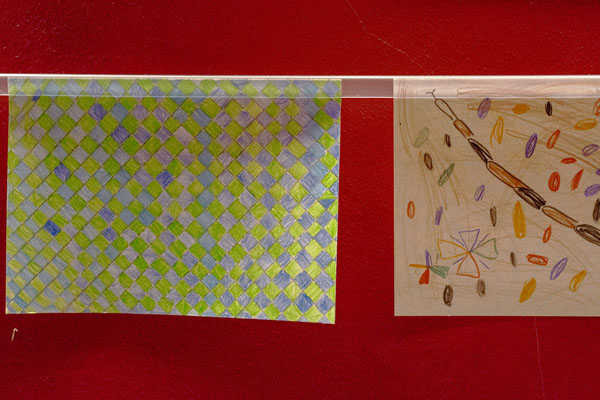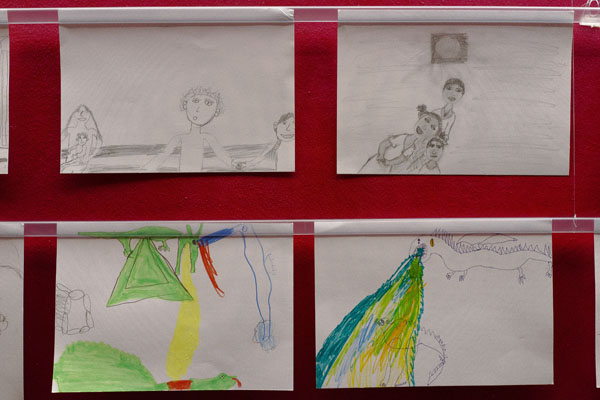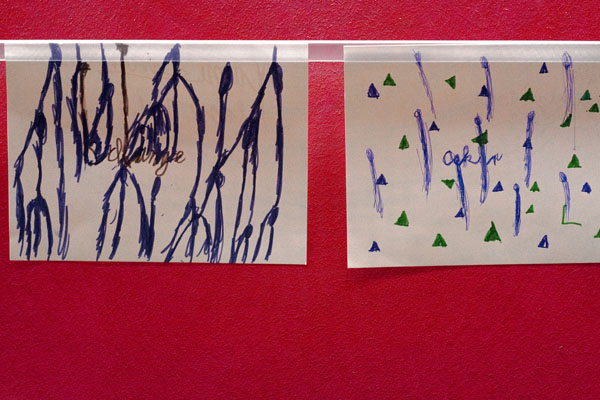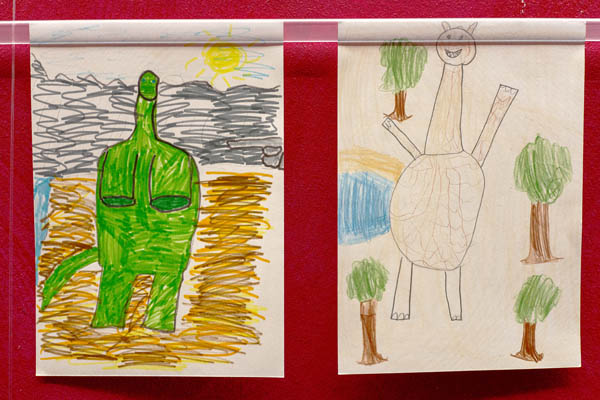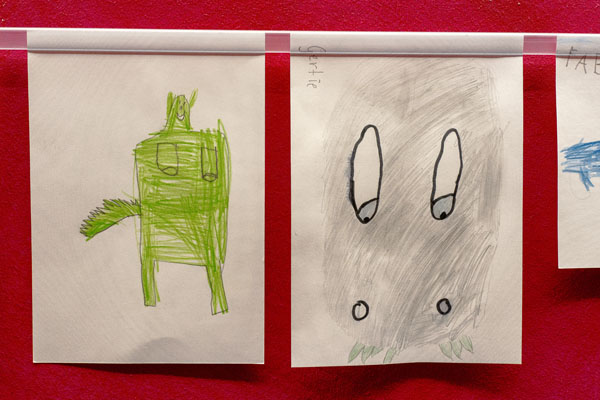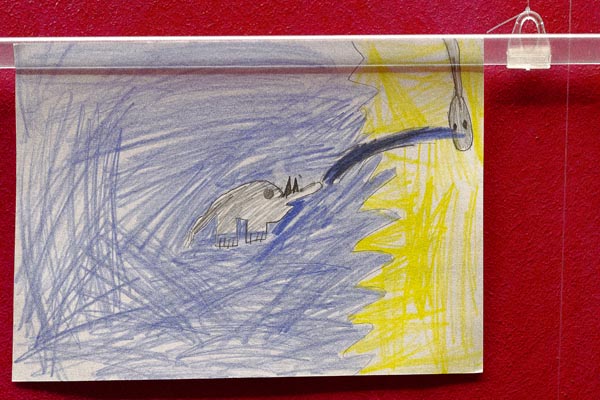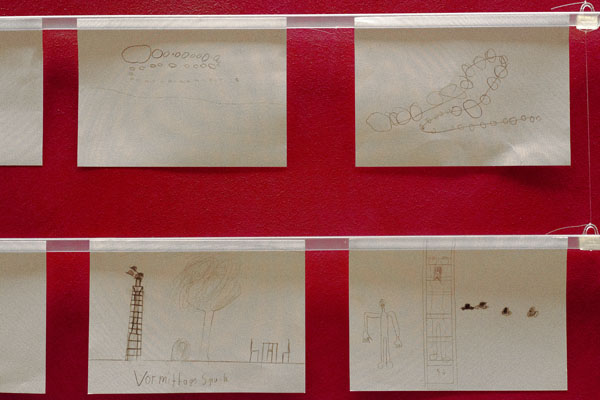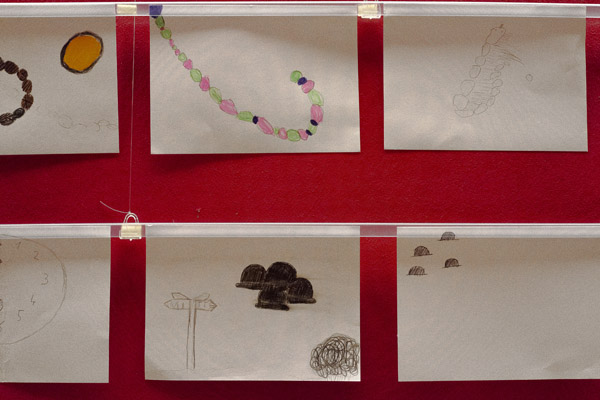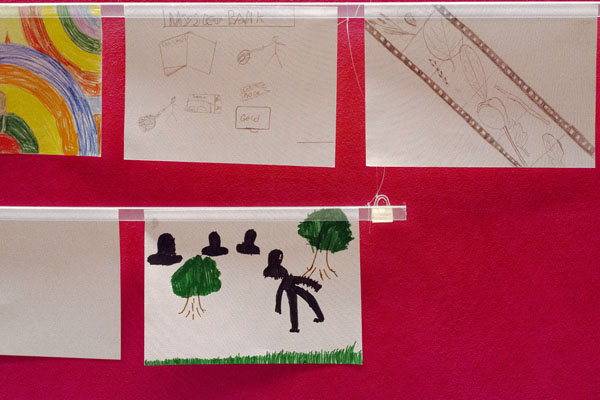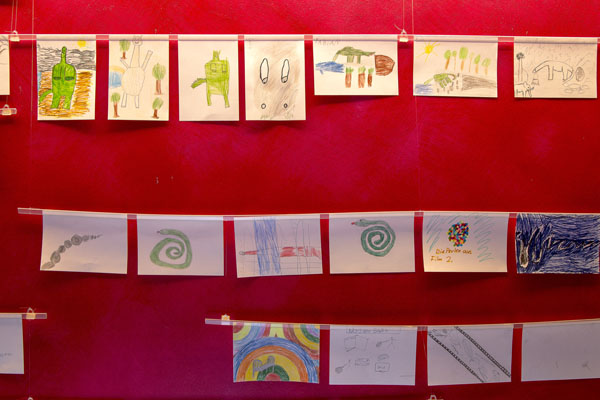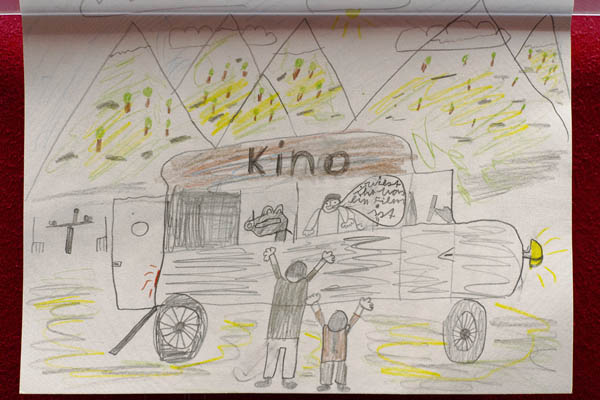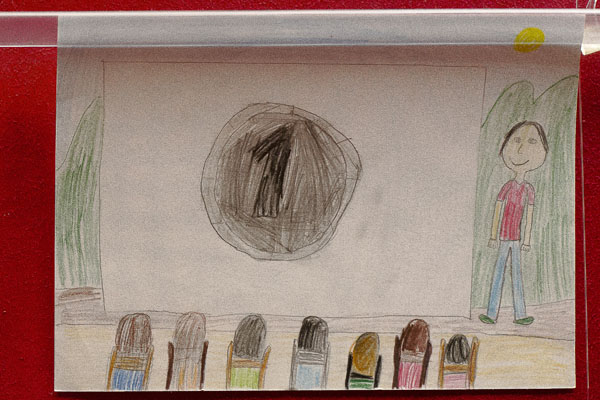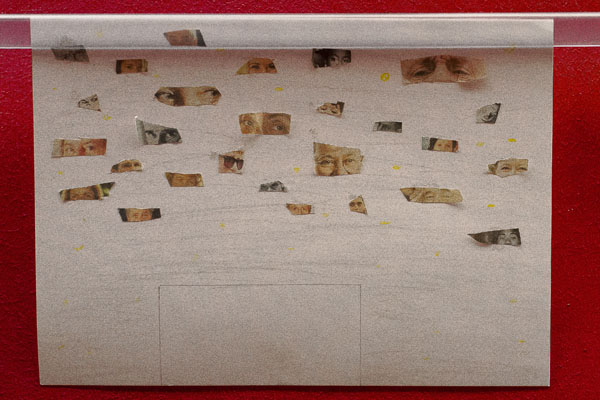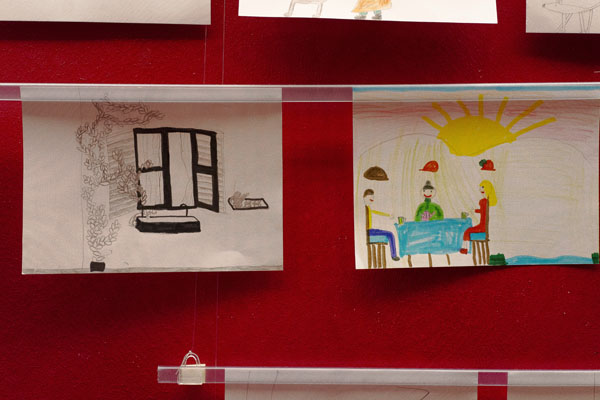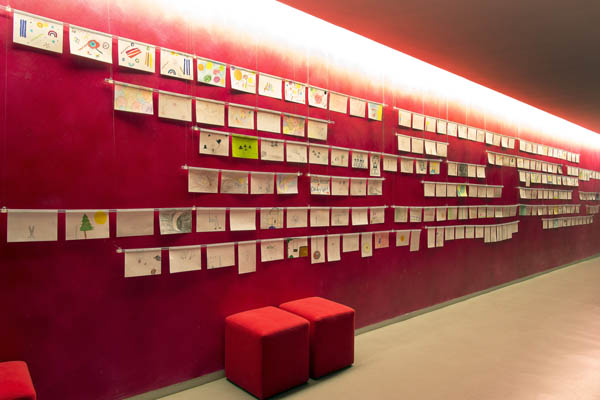Over 200 Berlin schoolchildren were able to gain an insight into Arsenal's film collection. They curated their own programs from short, mainly experimental, films in a playful way. They also drew their recollections of films. Stefanie Schlüter presented the results in an exhibition and three events for families and schools. Films, programs and drawings made by the children have be shown. They also provided live scores. The project was supported by the filmmakers Ute Aurand, Robert Beavers, Milena Gierke and the silent movie pianist Eunice Martins.
Films from Arsenal's archive
A MAN AND HIS DOG OUT OF AIR Robert Breer, USA 1957, 16 mm, 2 min
A MAN AND HIS DOG OUT OF AIR is a masterpiece of the metamorphosing line. It begins with elusive images of the wind, a bird, swirls, and movement, and ends with an amorphous image of an enormous man walking his dog around the circumference of the frame.
FADENSPIELE II Detel and Ute Aurand, Germany 2003, 16 mm, 8 min
Ute Aurand and Detel Aurand – two sisters, one a filmmaker, the other a painter – have created their second collaborative film. The film arose in the beech grove, on the rape field, in the bare woods of autumn, on the snowy path. Cloths are stretched out between trees, balls roll, stems get tangled – rectangles and squares form on the lines, and then little, cut out paper rectangles in the same colours make new forms.
FANTASMAGORIE Émile Cohl, France 1908, 16 mm, 2 min
FANTASMAGORIE is one of the earliest examples of traditional (hand-drawn) animation, and considered by film historians to be the first animated cartoon.
GERTIE THE DINOSAUR Winsor McCay, USA 1914, 16 mm, 12 min
Although not the first animated film, as is sometimes thought, it was the first cartoon to feature a character with an appealing personality.
HORSE OVER TEA KETTLE Robert Breer, USA 1962, 16 mm, 8 min
HORSE OVER TEA KETTLE is a tour de force of line drawing technique that proceeds according to the law of continual transformation. We are reminded of the work of Emil Cohl as we see a hat turn into a bird, a bird into a man and a man into a frog. The film creates a world of gravityles space where characters and objects (ladies with umbrellas, angels, trees, houses) generally float up. (Village Voice, 1975)
IMAGINATION Mary Ellen Bute, USA 1957, 16 mm, 3 min
IMAGINATION is a lively and swift collage of animated and photographed images partly taken from earlier films, which was broadcasted in the popular Steve Allen Show.
LOOSE CORNER Anita Thacher, USA 1986, 16 mm, 10 min
A young man, a young woman, a boy and a dog, as well as several objects like balls, a box etc. take the audience on an 'adventure' to an impossible place, a 'loose corner'. There our perception and the assumptions we rely on are put to the test through visual impossibilities. (Anita Thatcher)
POR PRIMERA VEZ Octavio Cortázar, Cuba 1967, 35 mm, 9 min
A document of the "audiovisual alphabetization" of Cuba in the 1960s: Cortázar records the screening of a mobile cinema in a remote mountain village and shows the reactions of the inhabitants upon their first encounter with film, which was Charlie Chaplin's "Modern Times".
RABBIT'S MOON Kenneth Anger, USA 1950/78, 16 mm, 7 min
Pierrot tries to reach the moon and Columbine, in vain, to the music of Andy Arthur.
RAINBOW DANCE Len Lye, UK 1936, 16 mm, 5 min
One of the earliest experimental colour shorts,this Post Office savings propaganda film is a colourful and surreal fantasy demonstrating why you should save for a rainy day.
VORMITTAGSSPUK Hans Richter, Germany 1928, 16 mm, 6 min
Objects (hats, cups, collars, etc.) momentarily take on a life of their own and rebel against man and the daily routine. As the clock strikes twelve, they return to their places.
